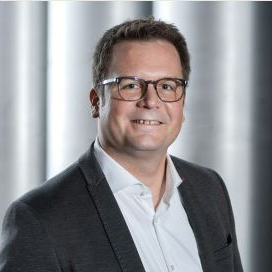Fundamentals and Applications of Reactive Materials
A special issue of Applied Sciences (ISSN 2076-3417). This special issue belongs to the section "Materials Science and Engineering".
Deadline for manuscript submissions: closed (15 April 2022) | Viewed by 9142
Special Issue Editors
Interests: reactive multilayers; self-propagating reactions; ruthenium aluminide; focused ion beam; EBSD; scanning electron microscopy
Interests: reactive materials; self-sustaining reactions; phase transformations; diffusion; metallic multilayers; nanocalorimetry; differential scanning calorimetry; X-ray diffraction
Special Issues, Collections and Topics in MDPI journals
Special Issue Information
Dear Colleagues,
We are inviting submissions to the Special Issue on “Fundamentals and Applications of Reactive Materials”.
In the wide range of exothermic phase formations, transformations in reactive materials are of particular interest. Reactions can be externally driven or self-sustaining following a trigger impulse. They can serve as an energy source for triggering further reactions or for joining applications as well as for the synthesis of high-temperature materials under exceptional non-equilibrium conditions. Underlying processes happen in times as short as a few microseconds on the nanometer scale while easily achieving more than 1500 K and velocities of up to more than 100 m/s. At the same time, the characteristics of the reaction are not only determined by the materials they comprise but also by their arrangement, morphology and surrounding conditions. This poses extraordinary challenges and opportunities for both fundamental research and applications, calling for high-resolution, time-resolved experiments, multiscale simulations and advanced modeling approaches that consider physical metallurgy, chemistry, advanced microstructure research and mechanical engineering.
In this Special Issue, you are invited to share the latest results in this diverse field of research. Full-length articles, communications and review articles will be considered for publication.
Dr. Christoph Pauly
Dr. Karsten Woll
Guest Editors
Manuscript Submission Information
Manuscripts should be submitted online at www.mdpi.com by registering and logging in to this website. Once you are registered, click here to go to the submission form. Manuscripts can be submitted until the deadline. All submissions that pass pre-check are peer-reviewed. Accepted papers will be published continuously in the journal (as soon as accepted) and will be listed together on the special issue website. Research articles, review articles as well as short communications are invited. For planned papers, a title and short abstract (about 100 words) can be sent to the Editorial Office for announcement on this website.
Submitted manuscripts should not have been published previously, nor be under consideration for publication elsewhere (except conference proceedings papers). All manuscripts are thoroughly refereed through a single-blind peer-review process. A guide for authors and other relevant information for submission of manuscripts is available on the Instructions for Authors page. Applied Sciences is an international peer-reviewed open access semimonthly journal published by MDPI.
Please visit the Instructions for Authors page before submitting a manuscript. The Article Processing Charge (APC) for publication in this open access journal is 2400 CHF (Swiss Francs). Submitted papers should be well formatted and use good English. Authors may use MDPI's English editing service prior to publication or during author revisions.
Keywords
- reactive materials
- self-propagating reactions
- thermal explosion
- combustion synthesis
- reactive joining
- ignition
- nanocalorimetry
- thermal analysis
Benefits of Publishing in a Special Issue
- Ease of navigation: Grouping papers by topic helps scholars navigate broad scope journals more efficiently.
- Greater discoverability: Special Issues support the reach and impact of scientific research. Articles in Special Issues are more discoverable and cited more frequently.
- Expansion of research network: Special Issues facilitate connections among authors, fostering scientific collaborations.
- External promotion: Articles in Special Issues are often promoted through the journal's social media, increasing their visibility.
- e-Book format: Special Issues with more than 10 articles can be published as dedicated e-books, ensuring wide and rapid dissemination.
Further information on MDPI's Special Issue polices can be found here.






